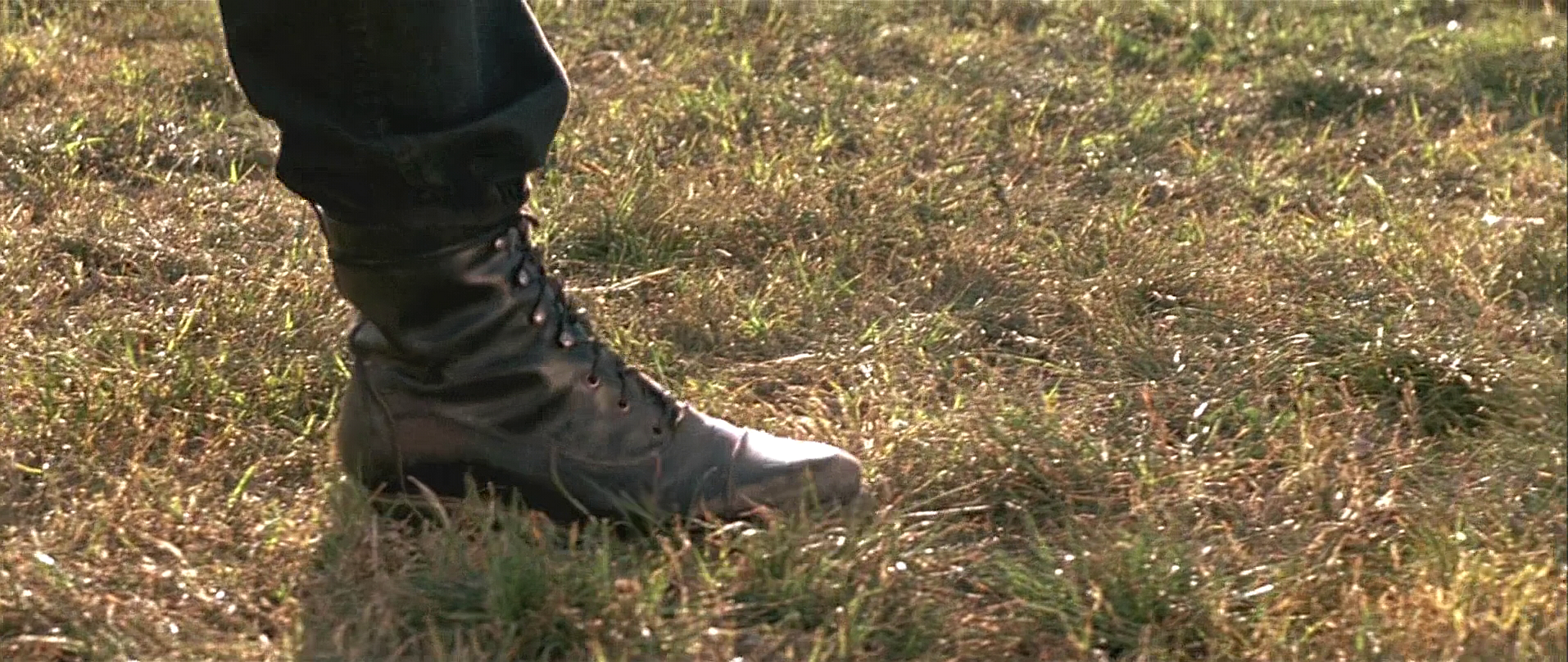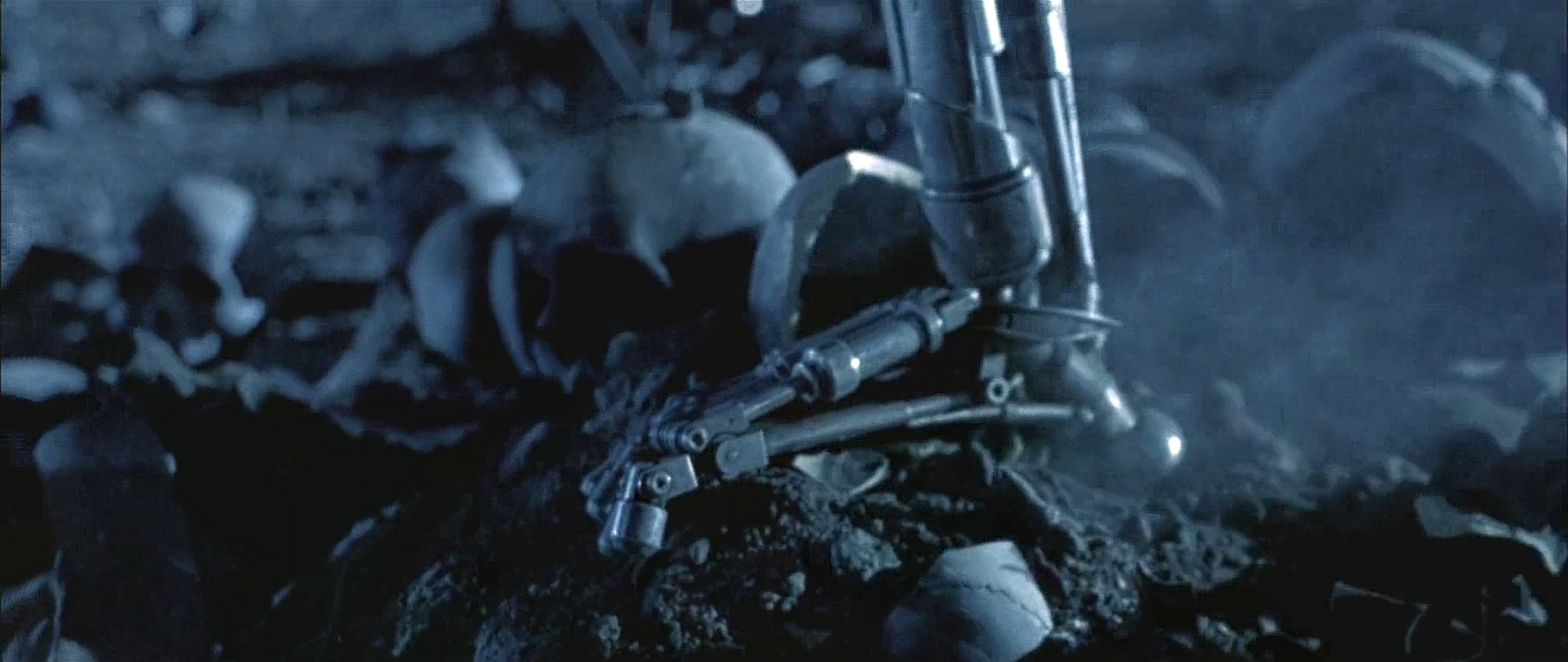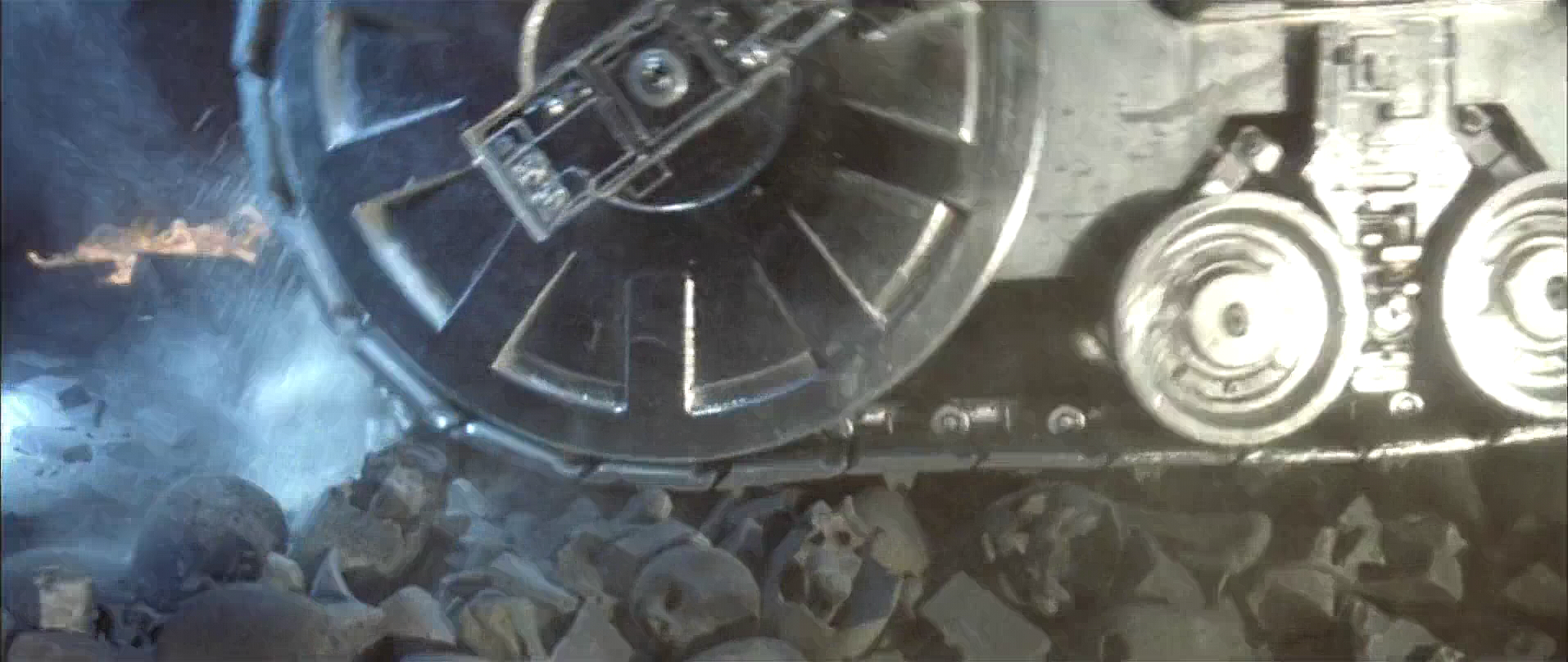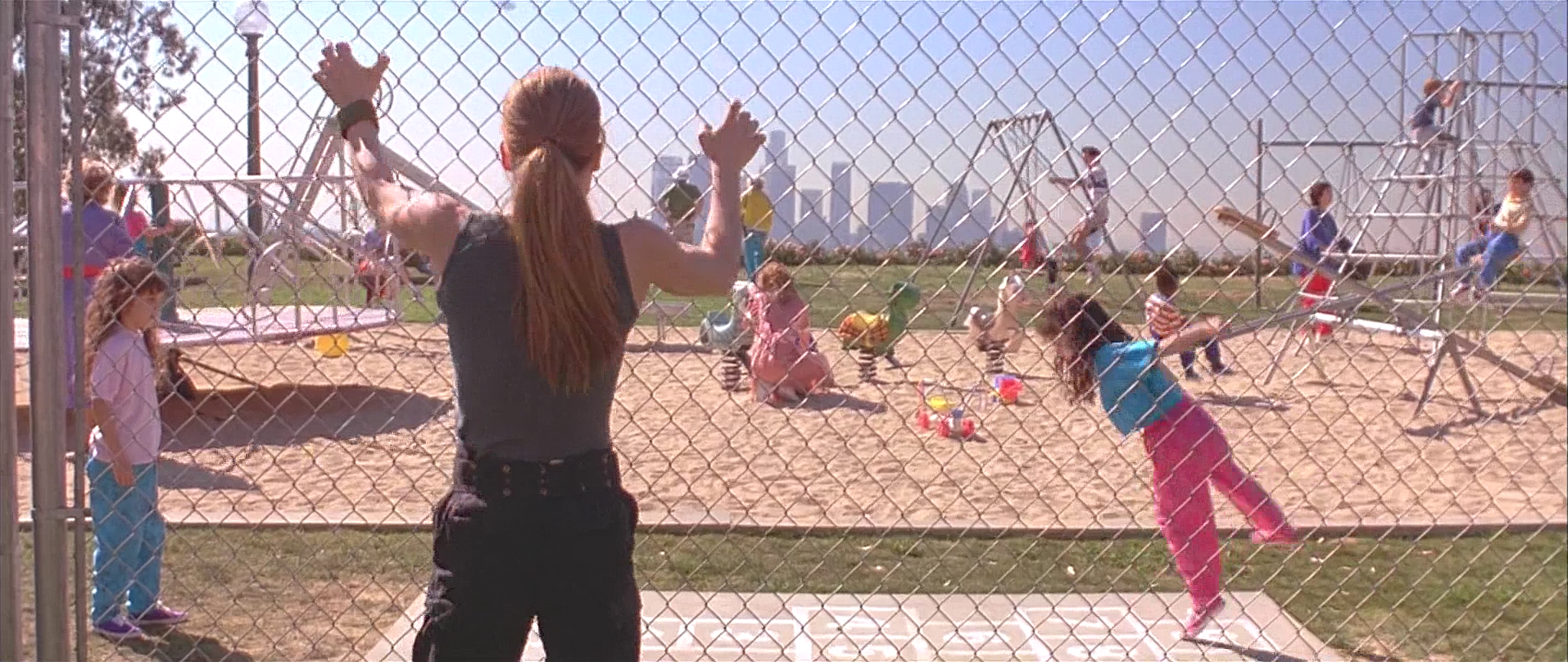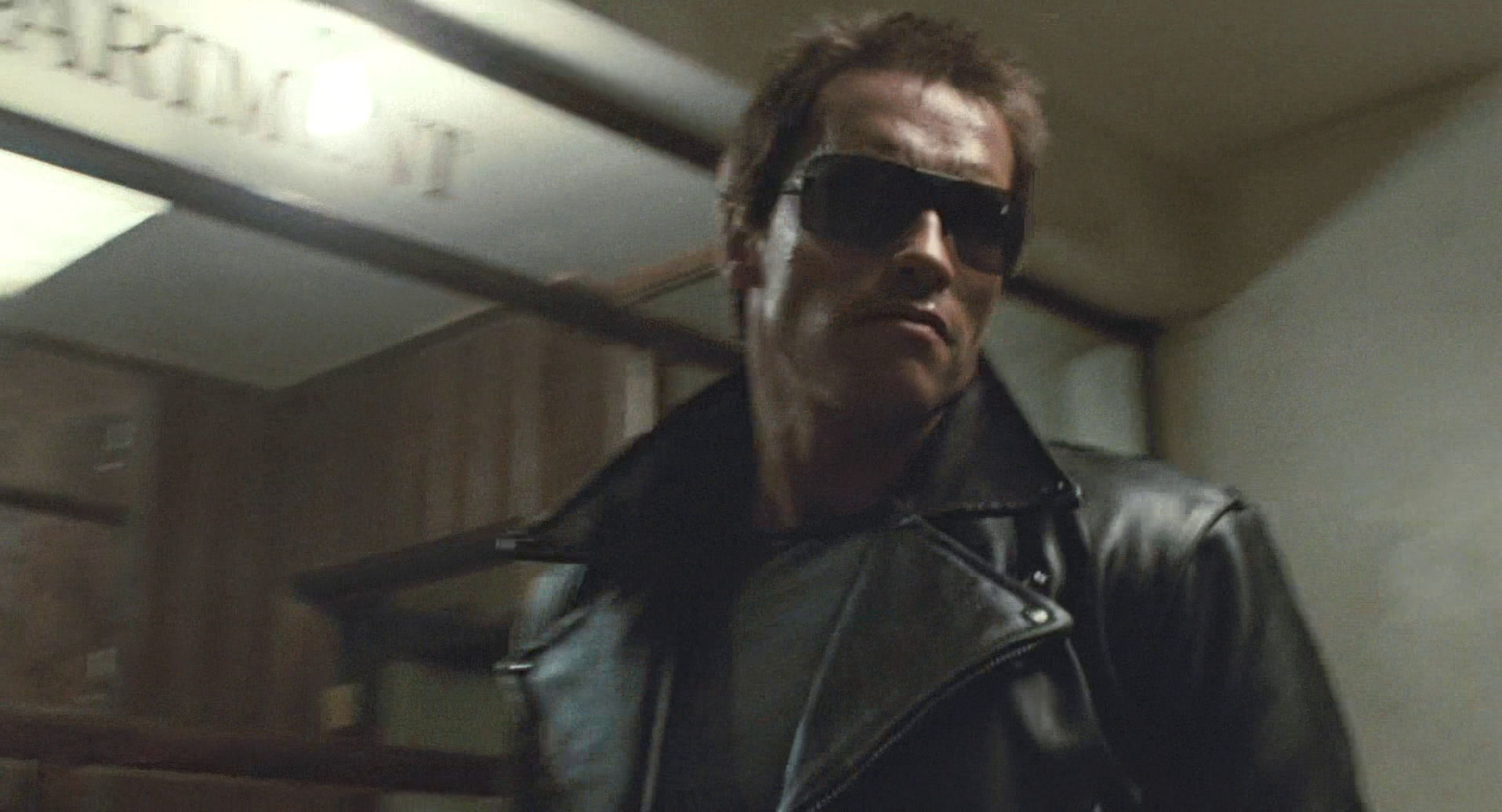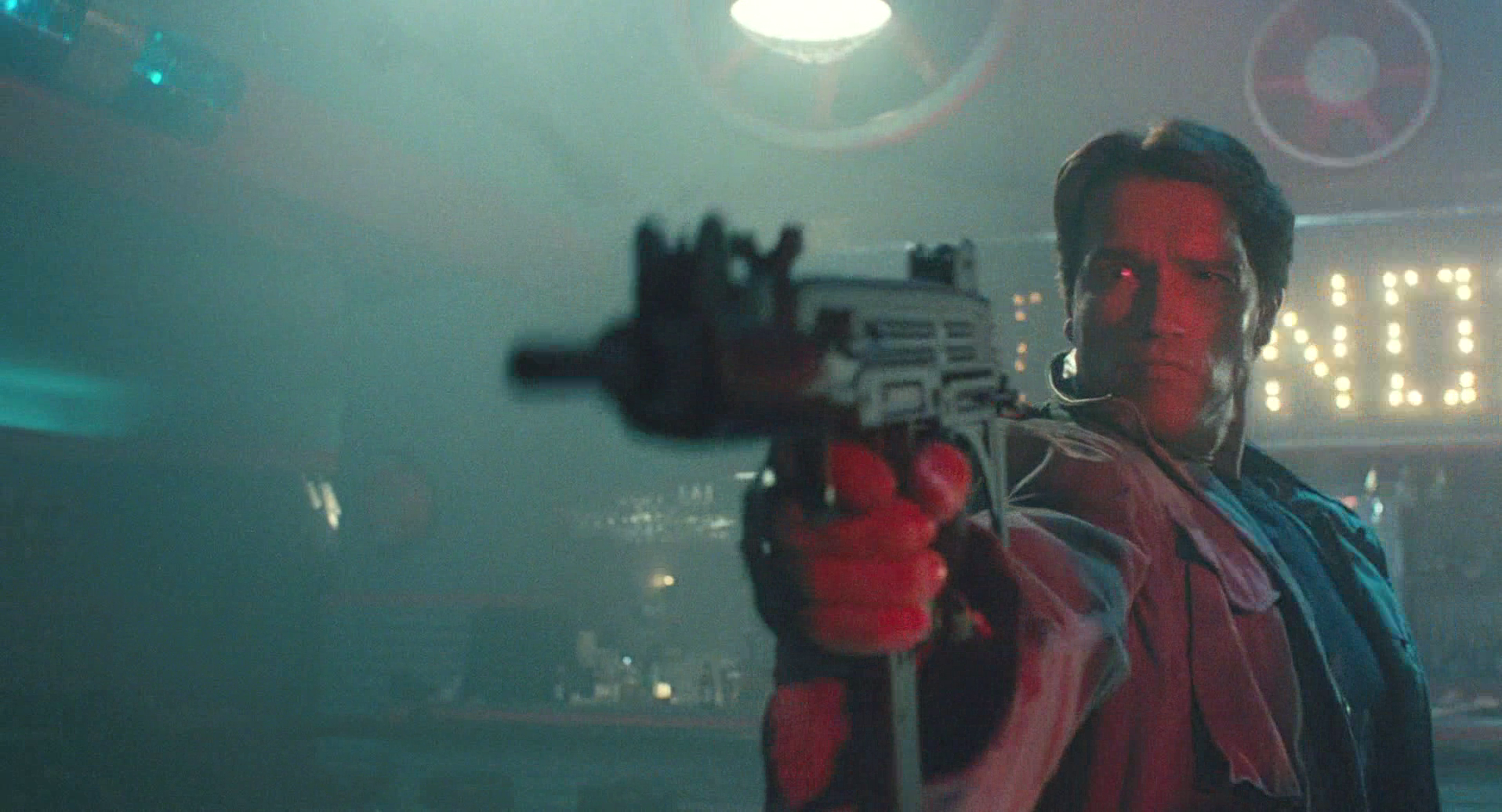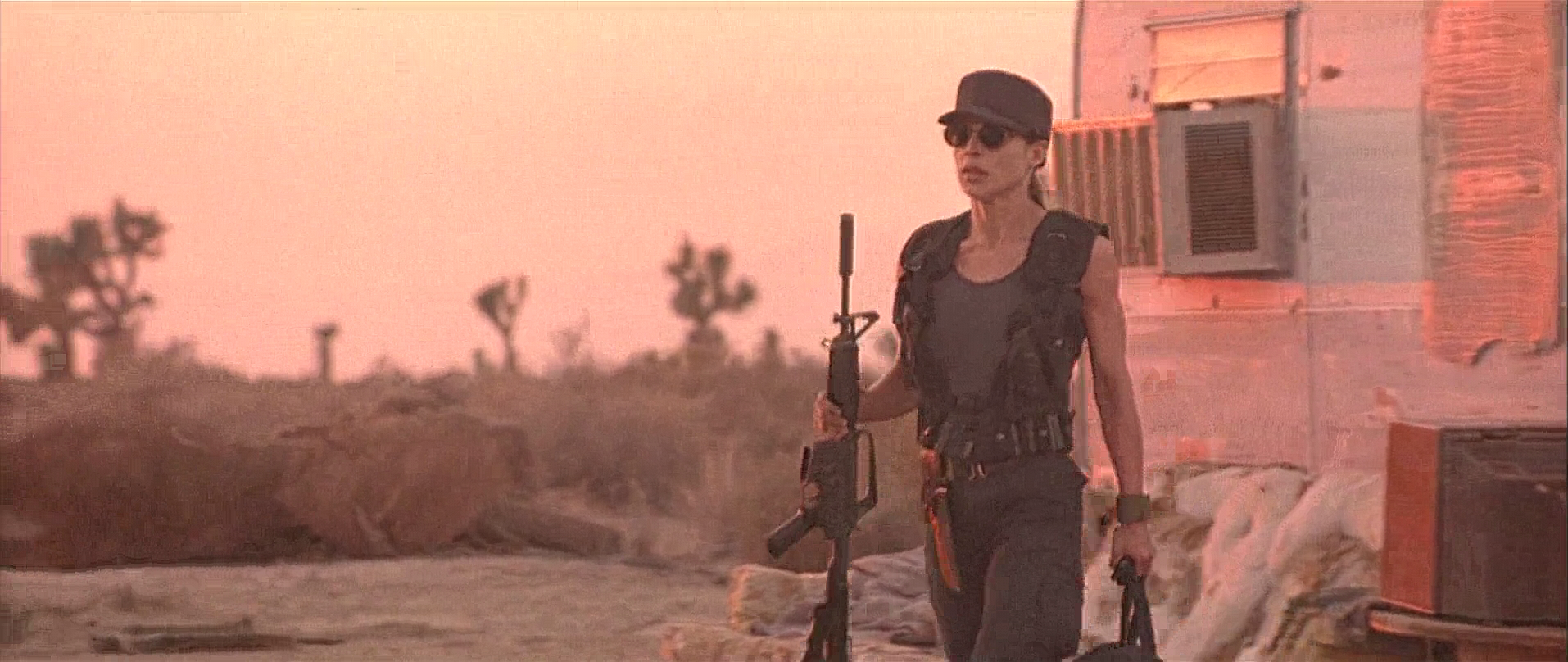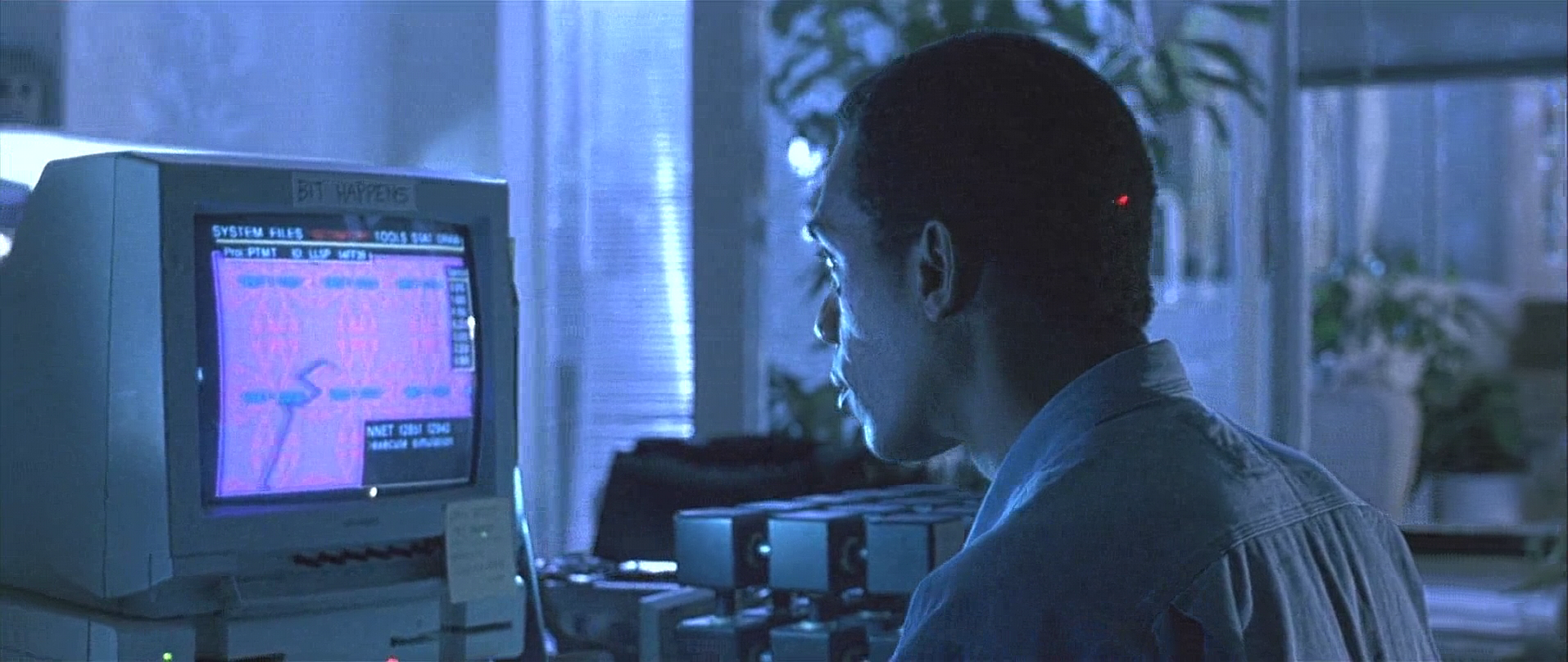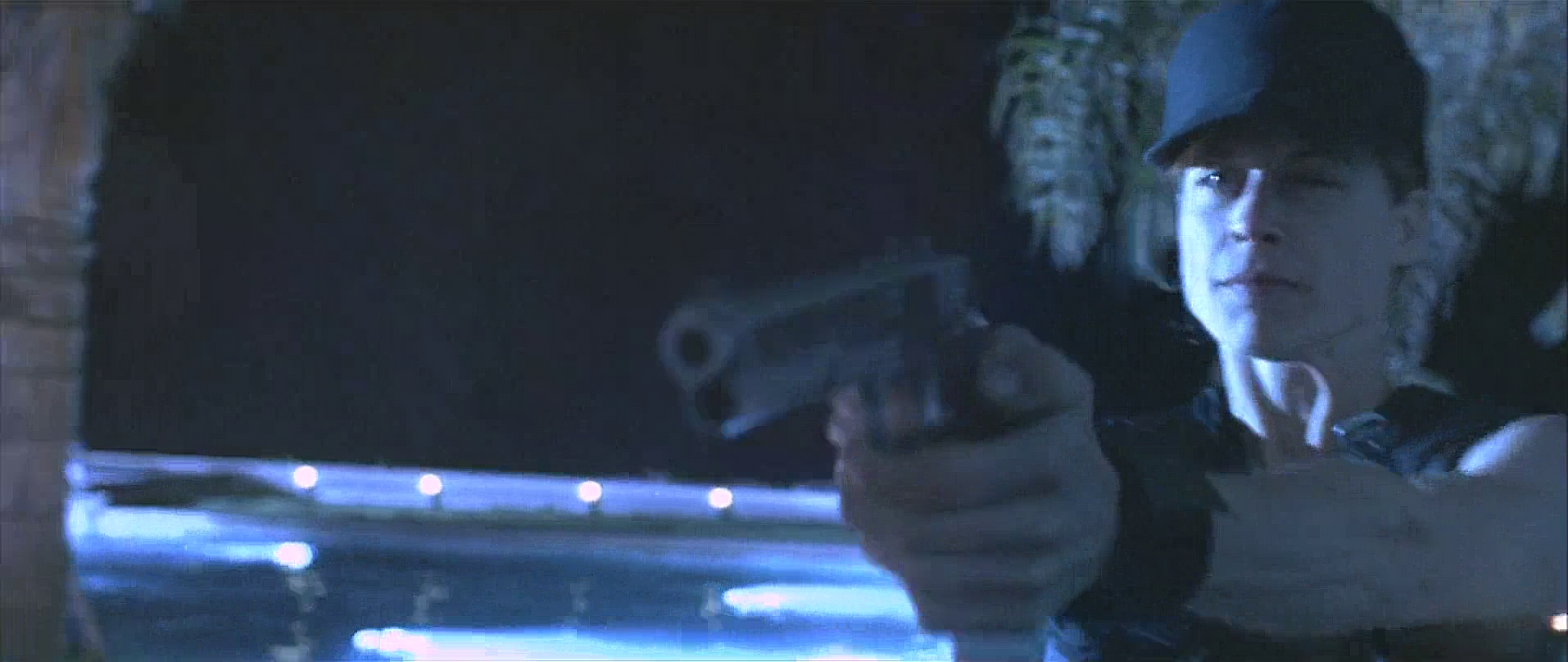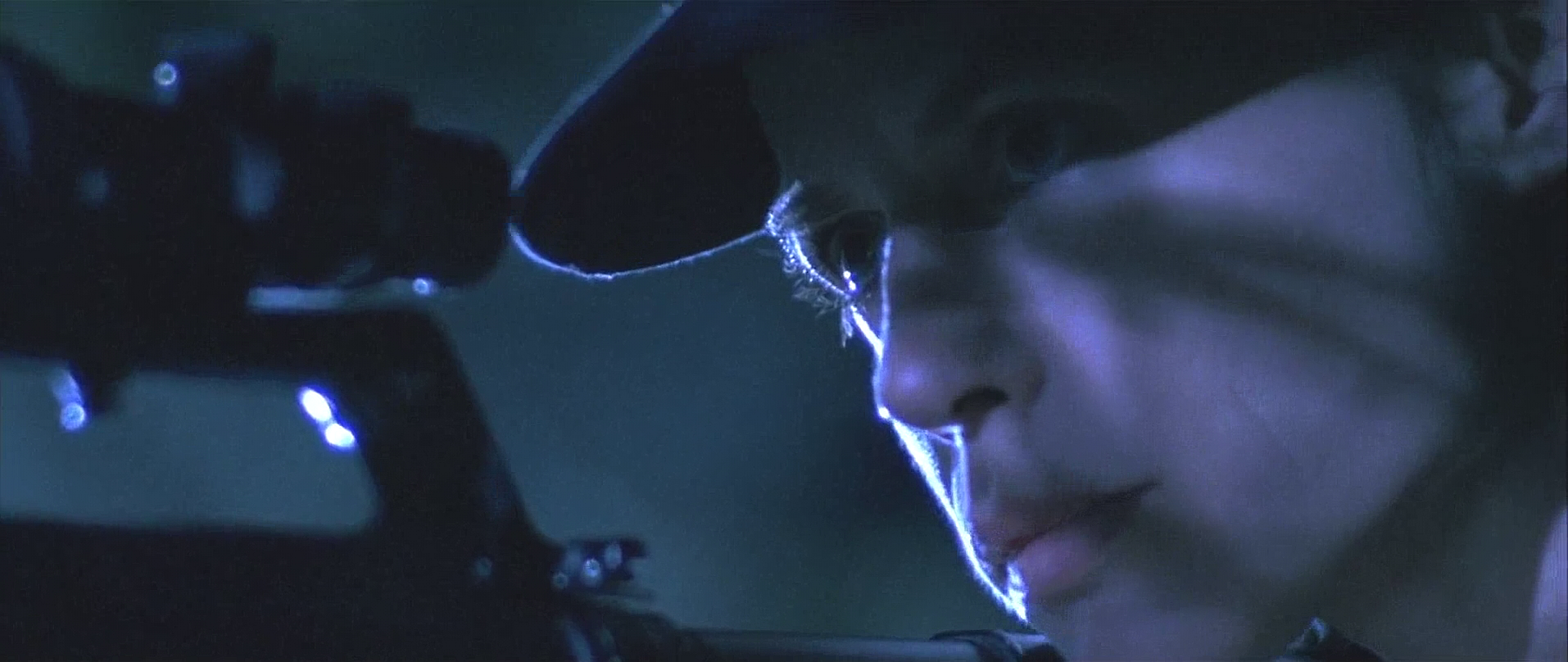I'm not gonna let you do it
“Everyone thinks of changing the world, but no one thinks of changing himself.”
― Leo Tolstoy
This idea is exemplified in Sarah’s dreams.
We see Sarah’s boot on the ground. This echoes a theme throughout the series and hints at what she is becoming:
Within the dream, we see an earlier iteration, literally and symbolically separated from the Sarah we see in T2.
Colorful clothing clashes with drab military fatigues and highlights the difference in the past and present Sarahs. Added to this, whatever humanity remains in the current iteration of Sarah is also in danger of being overwritten when she decides to prevent judgement day.
Alongside Ellen Ripley in Aliens (1986), Sarah’s look in this scene is iconic. However, beyond the imagery, it’s an echoing of the T800 from 1984:
This shows that the original T800 was successful in its mission, as the Sarah of 1984 no longer exists.
As Sarah approaches Dyson, the soundtrack echoes the percussive clangs heard during the T800’s entrance at the Pescadero Hospital. The combination of factors within this scene convey Sarah’s transformation:
the color scheme – a metallic blue, cold and calculating in its nature.
The atmosphere – the choppy waters of the pool, reflecting the inner conflict between machinery and humanity within both Sarah and the larger narrative.
Methodology – Sarah intends to kill the current iteration of Dyson due to his influence on future events. Her cold blooded methodology connects to Kyle Reese’s description of the original T800
Kyle Reese: “It can’t be bargained with. It can’t be reasoned with. It doesn’t feel pity, or remorse, or fear…”
As a final demonstration of this detachment from humanity, we can compare the current Sarah to the one last seen in 1984:
Within this sequence is the manifestation of Sarah’s ordeal – far removed from the determined woman of 1984, she is on the brink of becoming a terminator herself.
The Sarah last seen in 1984 displayed a newfound determination, a sense of hope, and a motherly instinct for her unborn son. In this scene, she is as lifeless as a machine. This is no longer the woman that Kyle Reese traveled across time for. Instead Sarah is now wracked with mania, despair, and a self-destructive obsession with preventing judgement day. While she is determined to change future events, she has lost herself in the process. She risks losing the very thing that makes her human, and that which separates humanity from the machines.
With Dyson dead to rights, we suddenly see a crack in her facade:
Sarah Connor: “I’m not gonna let you do it”
Miles Dyson: “What?”
In T1 the T800 killed without hesitation. In this instance however, Dyson’s simple “what?” marks the point at which Sarah is about to cross an existantial milestone. As soon as this occurs, Sarah experiences the situation from three perspectives:
being the pursued
being the pursuer
seeing both perspectives at the same time
A key point here is Sarah’s return to her former iteration. In seeing the moment from both past and present viewpoints, there is a collision of separate iterations, which evokes the realization of change. This realization then leads to a newfound perspective.
With Sarah’s unfinished statement: “I almost…” we see the magnitude of her understanding. While it may appear to be an immediate change, it was a process years in the making. Her newfound perspective goes beyond her previous, blinkered iteration, and she now has multiple points of reference. This is evidenced by the new light in which she sees John:
Sarah Connor: “You came here to stop me?”
John Connor: “yes I did.”
Sarah Connor: “I love you John. I always have.”
Notice here that Sarah echoes Reese’s words in the motel scene. She now acknowledges John’s transformation into a self-actualized individual. Instead of an object to protect, he is a mind to be followed. Sarah is now the future iteration that Reese spoke of in T1.
While Sarah’s latest iteration took years to reach this point, her change pales in comparison to the transformation that we see in Miles Dyson.

